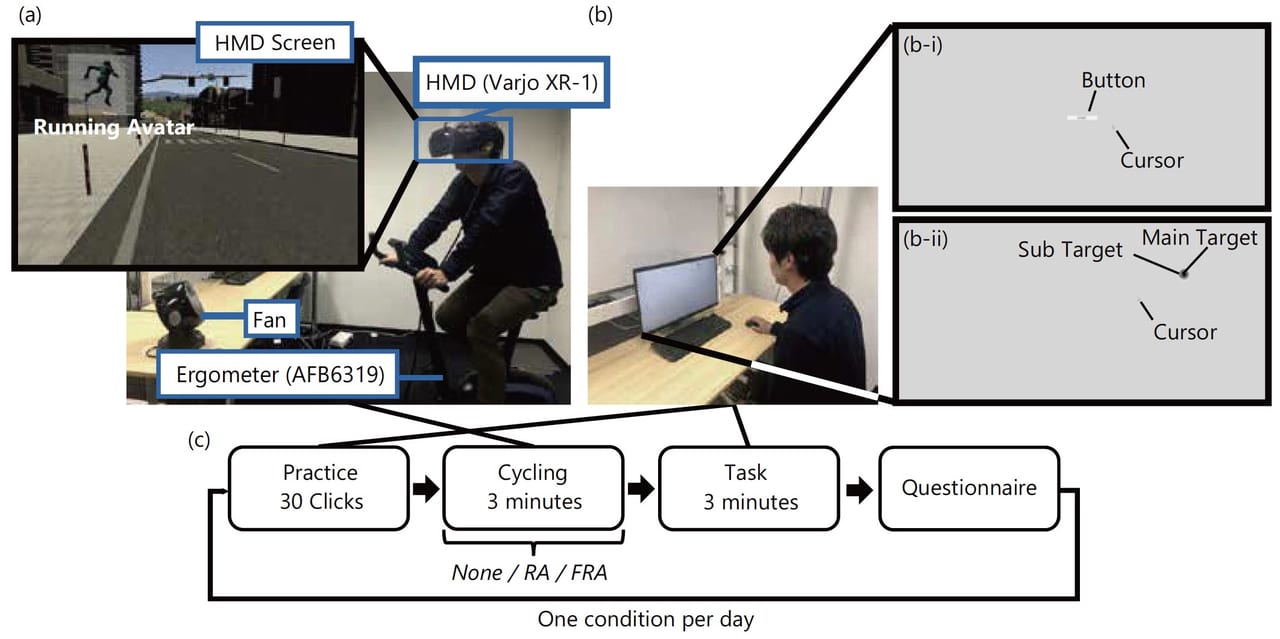修了生の長谷川君の論文が MDPI Sensors に採録されました。 スマートグラス上で走る人型アバタを提示すると、その後の作業速度が向上する傾向があることを確認しました。
https://www.mdpi.com/1424-8220/22/6/2272
(The paper PDF is open access)
- Eiichi Hasegawa, Naoya Isoyama, Diego Vilela Monteiro (Birmingham City Univ), Nobuchika Sakata (Ryukoku Univ), and Kiyoshi Kiyokawa
“The Effects of Speed-Modulated Visual Stimuli Seen through Smart Glasses on Work Efficiency after Viewing” - Abstract:
It is known that subjective time and work efficiency are affected by visual stimuli. However, existing studies only consider the effects of visual information on the user during viewing and ignore the after effects. Using smart glasses lets users see visual information while moving until just before arriving at the office or school. We hypothesize that the user’s effects from the visual information they were looking at just before working or studying affects the subsequent work. Through two user studies, we investigated whether information presented on smart glasses affected subsequent work efficiency. In the first experiment, participants were presented with avatars running at two levels of speed, or no avatars, through simulated smart glasses in a virtual environment. They then solved a dot-clicking task on a desktop monitor. In the second experiment, we investigated whether the same effect could be shown while walking in the real environment, with a running and a fast-walking avatar both at the same speed in order to see the difference in the effects of the different movements. In the first experiment, we confirmed that the speed of later work tended to improve when presenting the running human-shaped avatar. From the results of the second experiment, which was conducted in the real environment, we did not confirm that the subsequent work speed varied depending on the type of avatar being displayed. As a reason for the trend of improvement in the task efficiency in the first experiment, observation of fast human motion may have unconsciously accelerated the observers’ body movement speed due to the mirror neuron mechanism. As a reason for why the work speed did not improve in the second experiment, the participants may be affected by other pedestrians and running cars. Additionally, it was difficult to see the images on the smart glasses while walking in the real environment.

